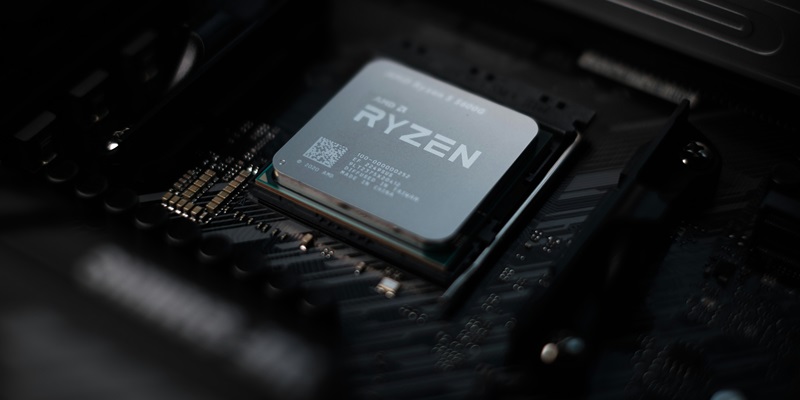The recent release of the Windows 11 “24H2” update has dramatically reshaped the performance landscape for AMD’s Ryzen CPUs, bringing significant transformations, especially in gaming applications. Focusing primarily on optimizing branch prediction capabilities, this update has effectively unlocked the full potential of these processors, leading to notable performance enhancements.
When AMD’s Ryzen 9000 “Zen 5” CPUs first launched, they encountered considerable criticism for their lackluster performance in gaming realms. Reviewers noted a stark contrast between their benchmark results and AMD’s official figures, highlighting suboptimal Windows operating system support as the primary issue. The performance gaps were mainly due to inefficient branch prediction optimizations within the OS, leading to the processors not fully leveraging their powerful hardware capabilities, causing a lukewarm reception among consumers and tech reviewers alike.
Initial Reception of AMD Ryzen 9000
At the inception of AMD Ryzen 9000 “Zen 5” CPUs, performance in gaming was a significant point of contention. Early reviews brought to light a noticeable disparity between the benchmark results obtained by reviewers and the more optimistic figures provided by AMD itself. This discrepancy was quickly attributed to the inadequacies in Windows OS support, particularly in how the system handled branch prediction—a critical element for CPU performance in gaming scenarios where multiple pathways and decisions are processed almost simultaneously.
Despite the impressive hardware specifications and the architectural advancements brought by the Ryzen 9000 series, these CPUs couldn’t fully actualize their potential due to the suboptimal software environment. The primary culprit for these underwhelming initial results was the inefficiency in branch prediction optimizations embedded within the Windows OS. This misalignment between hardware capabilities and software support caused the Ryzen 9000 processors to stumble, failing to deliver the expected performance leap and leading to a rather tepid market reception.
The Critical Role of Branch Prediction
Branch prediction stands as a fundamental pillar for CPU performance, particularly in the gaming domain where the efficient processing of multiple pathways can make a substantial difference. The Windows 11 24H2 update zeroes in on this crucial component by significantly enhancing branch prediction capabilities. By aligning OS support more closely with the sophisticated hardware architecture of AMD Ryzen CPUs, the update has managed to amplify performance levels profoundly.
The introduction of the update brought a marked improvement, especially for AMD’s Ryzen 9000 series. Internal tests conducted by AMD revealed an impressive 9% average performance uplift at 1080p resolution when comparing the Ryzen 9000 “Zen 5” CPUs to the preceding Ryzen 7000 “Zen 4” models. This enhancement in branch prediction allowed the hardware to operate more efficiently, translating computational prowess into tangible performance gains, particularly apparent in gaming environments.
Benchmark Revelations and Testing Outcomes
Independent testing by well-regarded media outlets like Hardware Unboxed further validated AMD’s internal findings. Through rigorous benchmark tests, these outlets confirmed double-digit performance increases across various gaming titles, underscoring the significant impact of the Windows 11 24H2 update on enhancing the capabilities of AMD’s CPUs. The results were consistent and highlighted a robust improvement across multiple gaming scenarios, bringing AMD’s processors much closer to the performance levels initially promised.
Interestingly, the Ryzen 7000 “Zen 4” series was not left out of these advancements. The update’s impact extended across generational lines, with the Ryzen 7000 CPUs also experiencing noticeable performance enhancements. This broader, cross-generational uplift demonstrated the comprehensive nature of the Windows 11 24h2 update. The refined branch prediction capabilities didn’t just benefit the latest hardware but also breathed new life into existing, slightly older models, maximizing their performance potential and extending their relevance within the competitive CPU market.
Strategic Decisions by AMD
Despite the noticeable performance improvements resulting from the Windows 24H2 update, AMD made a strategic choice not to prominently feature these changes during the Ryzen 9000 launch. This decision arguably shaped the initial market perception and the overall reception of their new CPUs. By not emphasizing the substantial software-based enhancements, AMD may have inadvertently tempered the enthusiasm and confidence consumers and industry insiders had in the new series.
Had AMD chosen a different strategic approach that included a clear narrative about the expected performance boosts from optimizing the Windows OS, the initial reception of the Ryzen 9000 series might have been more favorable. Highlighting the interplay between hardware advancements and software updates would have painted a more comprehensive picture of the true potential of these processors, possibly boosting consumer confidence and market appeal from the beginning.
Broader Market Implications
The performance upgrades from the Windows 11 24H2 update are not limited to AMD? Intel CPUs also showed notable improvements. This indicates the update’s benefits are not confined to one hardware brand, underscoring the importance of system-level optimizations in boosting CPU performance across the board. Enhancements in branch prediction capabilities within the OS exemplify how software updates can significantly uplift the performance of existing hardware, irrespective of the manufacturer.
With Intel’s new Arrow Lake-S CPUs on the horizon, the desktop CPU market is set for fierce competition. The ongoing rivalry between AMD’s enhanced performance and Intel’s upcoming innovations will continue to influence the future of CPU technology. Windows is focusing on refining critical areas like branch prediction, showcasing its strong potential to drive CPU performance gains. This strategy not only benefits new hardware releases but also extends the life and capabilities of existing devices. It promotes a more inclusive, competitive technology ecosystem by fostering longevity and encompassing a wider range of products.

